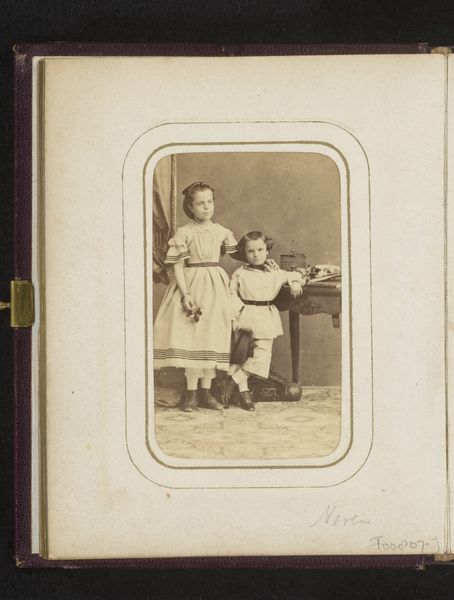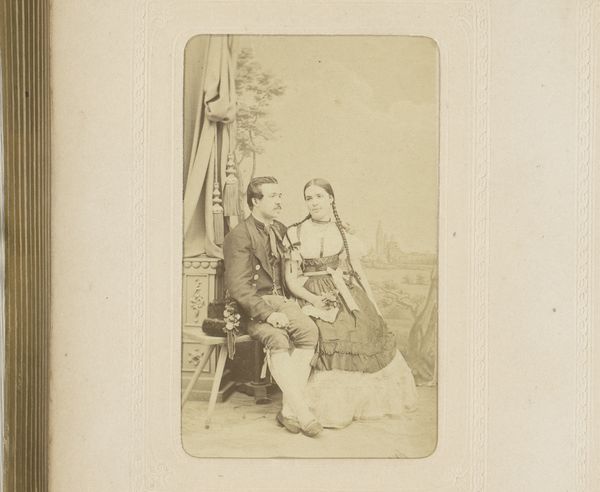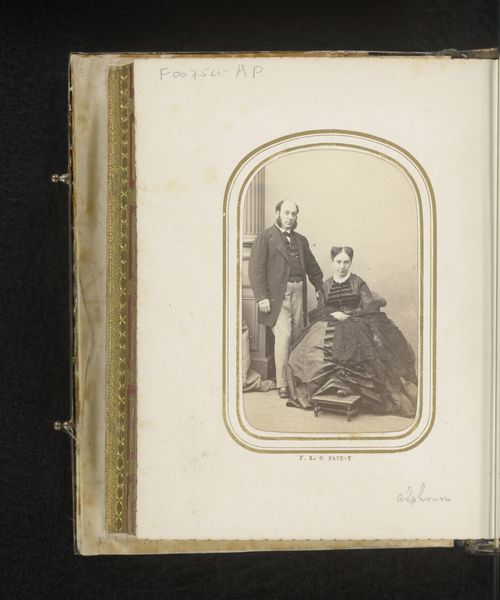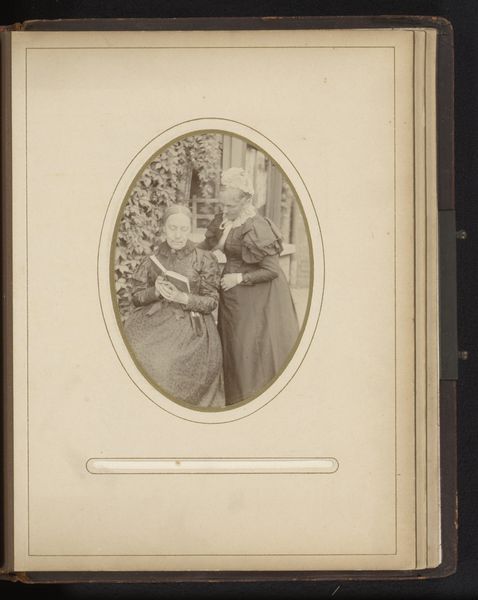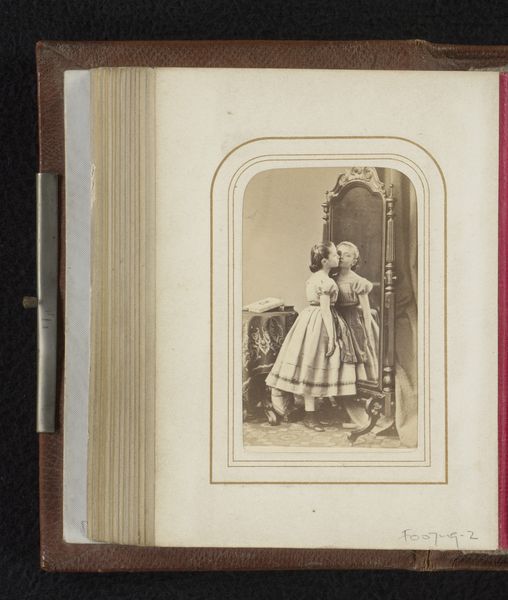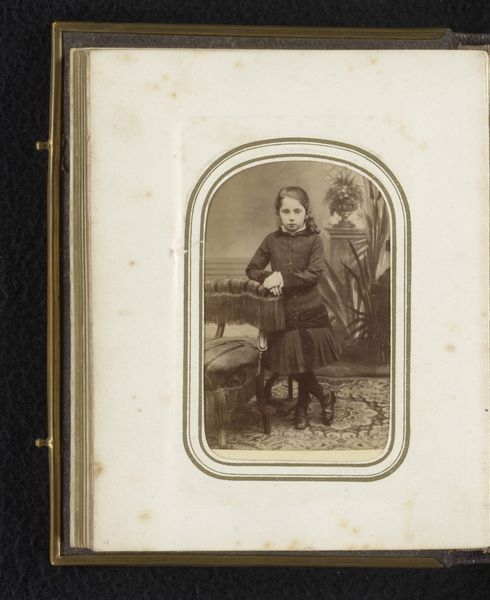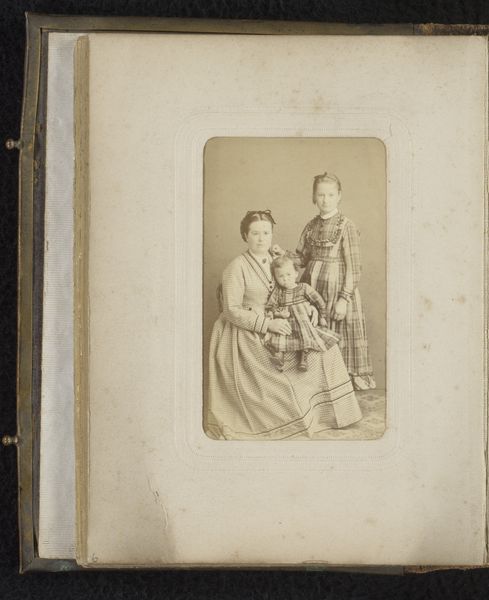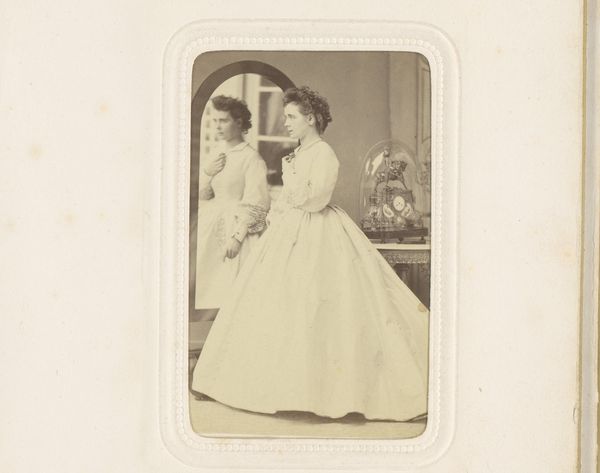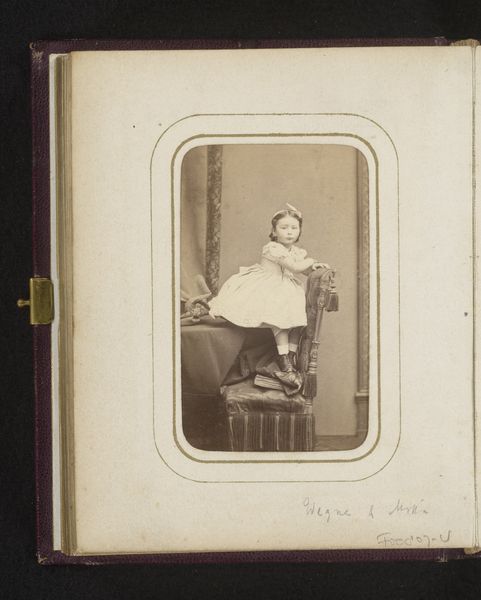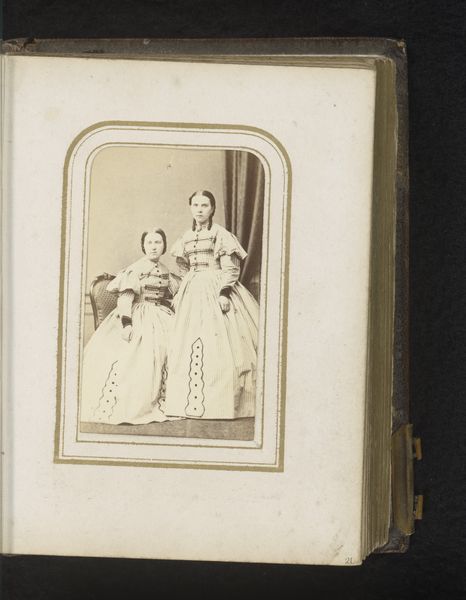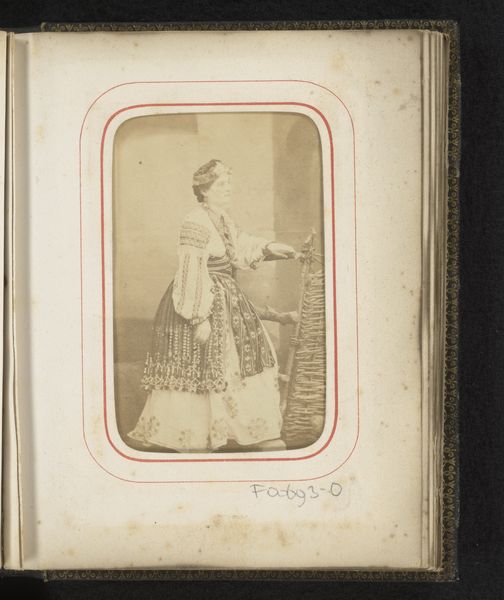
daguerreotype, photography
#
portrait
#
ink paper printed
#
daguerreotype
#
photography
#
19th century
#
genre-painting
Dimensions: height 137 mm, height 97 mm
Copyright: Rijks Museum: Open Domain
Editor: So, here we have "Toneelscène met soldaat met dienstmeisje," a staged scene with a soldier and a maid, made between 1889 and 1900. The material is daguerreotype; it’s quite charming. What can you tell me about it? Curator: It is indeed a carefully constructed image that speaks to the shifting social dynamics and evolving representation of gender roles during its time. Looking at this piece, I'm drawn to think about the public image of women and soldiers in the late 19th century, a period marked by distinct societal expectations and power dynamics. What do you notice about the way they are posed? Editor: Well, the maid looks like she is swooning and leaning heavily into the soldier. She has her eyes closed. Curator: Exactly. Consider the prevailing cultural narratives. How were women portrayed in art, literature, and popular media at that time? The presentation of this young woman seems highly romanticized. How might the power dynamics between men and women of this class also influence such a portrayal in photographs destined for public display or consumption? Editor: That makes sense. I never thought about what a daguerreotype in the late 19th Century really meant as far as its broader social role. Is there any further historical context we should be aware of? Curator: Photography had a transformative role in shaping public perceptions and memory, particularly in defining social classes, professions, and even notions of gender and virtue. As photography became more widespread, its accessibility contributed significantly to how different segments of society were perceived, valued, and remembered. Editor: I hadn't considered that—thank you for putting the work in context. It is something to consider next time I look at older art. Curator: I agree. Thinking about the impact art has is key to how we perceive it.
Comments
No comments
Be the first to comment and join the conversation on the ultimate creative platform.
